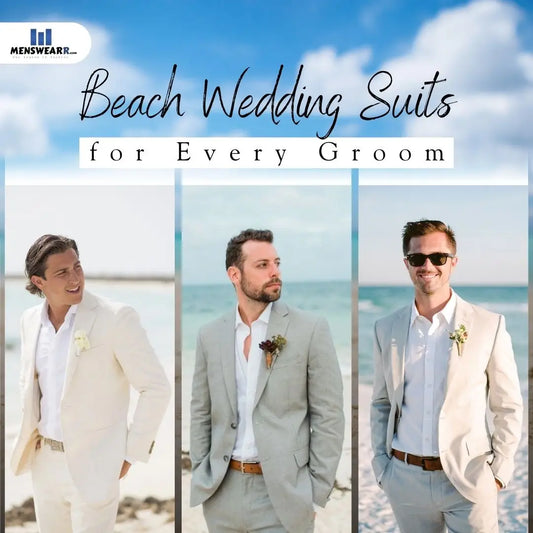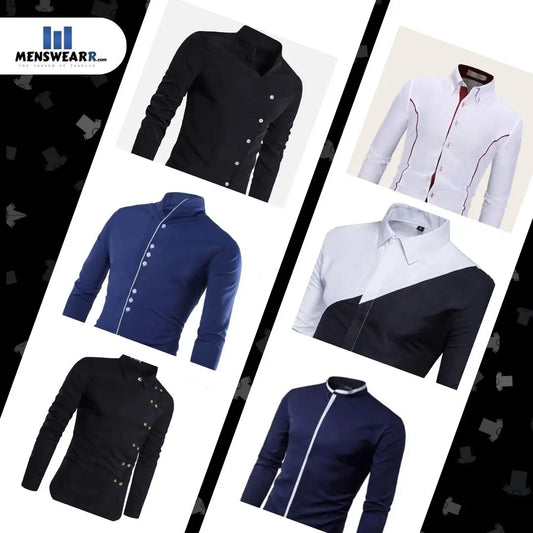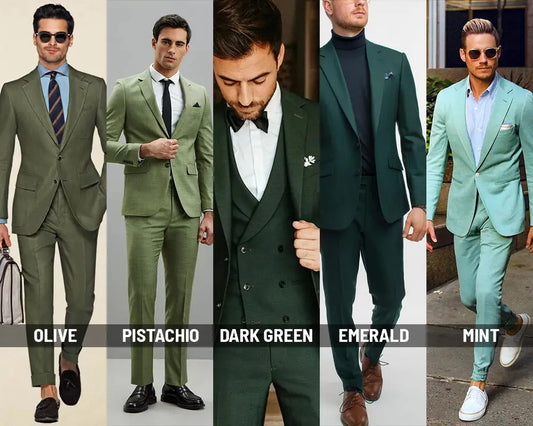When it comes to dressing for formal occasions, the choice between a tuxedo and a suit can often leave many individuals perplexed. While both options are considered appropriate attire for formal events, there are distinct differences that set them apart. From their overall aesthetic to their specific design details, understanding the dissimilarities between a tuxedo and a suit can help you make the right choice for your next special occasion.
In this post, we will delve into the world of formalwear and explore the differences between a tuxedo and a suit, along with tips on when and how to wear each.
Aesthetics: Tuxedo vs. Suit
One of the most noticeable differences between a tuxedo and a suit lies in their overall aesthetics.
-
Tuxedos are synonymous with elegance, sophistication, and formal evening events. They are designed to make a strong fashion statement, with their distinct features setting them apart from everyday attire. Tuxedos often feature satin or grosgrain lapels, satin-covered buttons, and a satin stripe down the sides of the trousers. These details create a luxurious and polished look that is perfect for black-tie events.
-
Suits, on the other hand, have a more versatile and conservative appearance. They are commonly worn for business settings, weddings, and other formal events where a tuxedo might be considered too extravagant. Suits are designed to be timeless and adaptable, making them a go-to choice for a variety of occasions.
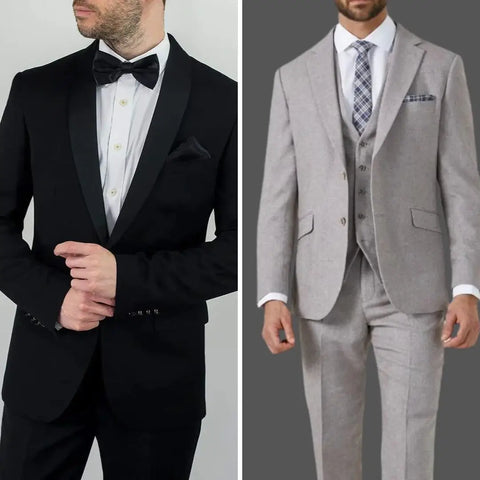
Jacket: Formal vs. Versatile
The jacket is a key component of both tuxedos and suits, and understanding the differences can help you make an informed decision.
-
Tuxedo Jackets: Tuxedo jackets are typically more formal and elegant in appearance. They often feature a shawl collar, peaked lapels, or a notched lapel covered in satin or grosgrain fabric. The use of satin or grosgrain on the lapels creates a subtle contrast against the rest of the jacket's fabric, adding a touch of sophistication. Tuxedo jackets are also usually single-breasted, though double-breasted options are available for a more dramatic look.
-
Suit Jackets: Suit jackets tend to have a more standard design. They usually feature notched lapels and are made from the same fabric as the rest of the suit. Suit jackets are more versatile and can be dressed up or down depending on the occasion. They are available in a variety of styles, including single-breasted and double-breasted options.
Trousers:
Another distinguishing factor between tuxedos and suits lies in their trouser designs.
-
Tuxedo Trousers: Tuxedo trousers are often accompanied by a satin or grosgrain stripe running down the sides, adding a touch of formality. They are typically worn with suspenders or braces, as they usually lack belt loops. This design choice ensures a clean, streamlined look that complements the jacket.
-
Suit Trousers: Suit trousers are simpler in design and often come with belt loops for the convenience of the wearer. They are usually worn with a belt to complete the ensemble. Suit trousers are more practical for everyday wear and can be easily paired with different jackets for a variety of looks.
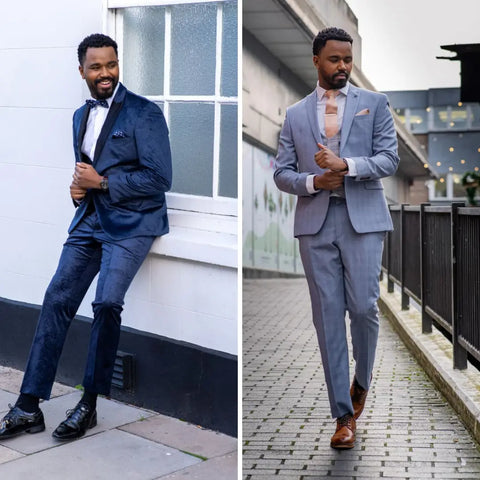
Shirt and Accessories
The shirt and accessories worn with a tuxedo or a suit also differ to some extent.
-
Tuxedo Shirt and Accessories: When wearing a tuxedo, a crisp white dress shirt is a must. It is traditionally accompanied by a black bow tie, although other options like a long tie or a necktie have become acceptable in recent years. In addition, a tuxedo is often paired with a cummerbund or a waistcoat, which adds a touch of sophistication to the overall look. Patent leather shoes and cufflinks are also essential accessories for a complete tuxedo ensemble.
-
Suit Shirt and Accessories: Suit shirts offer more variety in terms of colour and pattern choices. They can be paired with a wide range of ties, from traditional silk ties to more modern slim ties or even bow ties. The choice of accessories for a suit is generally more flexible and can be adapted to match the overall theme or personal style. For example, a pocket square, tie bar, or a stylish watch can add a personalized touch to your suit.
Occasions: When to Wear a Tuxedo vs. a Suit
Understanding the appropriate occasions for each type of attire is crucial.
-
Tuxedos: Tuxedos are typically reserved for black-tie events and formal evening affairs. They are often seen at weddings, galas, awards ceremonies, and other grand occasions. If the invitation specifies "black tie," a tuxedo is the safest and most appropriate choice.
-
Suits: Suits are more versatile and can be worn in a variety of formal and semi-formal settings. From business meetings to weddings and cocktail parties, suits are a safe and appropriate choice for a wide range of occasions. For events labelled as "business formal" or "cocktail attire," a well-tailored suit is often the best option.
Personal Style and Preference: What Suits You Best?
While it is important to consider the guidelines and traditions associated with tuxedos and suits, personal style and preference should not be overlooked. Ultimately, feeling comfortable and confident in your attire is crucial.
-
If you have a penchant for timeless elegance and want to make a grand impression at a black-tie event, a tuxedo might be the perfect choice for you. Its luxurious details and formal aesthetic ensure you’ll stand out in the best way possible.
-
On the other hand, if you prefer a more understated and versatile look that can be worn on multiple occasions, a well-tailored suit might be the better option. Suits offer endless possibilities for customization, allowing you to express your style while maintaining a polished appearance.
Pro Tips for Choosing Between a Tuxedo and a Suit
-
Check the Dress Code: Always refer to the event’s dress code. "Black tie" calls for a tuxedo, while "business formal" or "cocktail attire" typically requires a suit.
-
Invest in Quality: Whether you choose a tuxedo or a suit, invest in high-quality fabrics and tailoring. A well-fitted outfit always makes a lasting impression.
-
Accessorize Thoughtfully: The right accessories can elevate your look. For tuxedos, stick to classic choices like a bow tie and cummerbund. For suits, experiment with ties, pocket squares, and cufflinks.
-
Consider the Season: For summer events, lightweight fabrics like linen or cotton suits are ideal. For winter, wool suits or tuxedos with a velvet blazer can add warmth and sophistication.
-
When in Doubt, Ask: If you’re unsure about the dress code, don’t hesitate to ask the host or organizer for clarification.
By understanding the nuances of tuxedos and suits, you’ll be well-prepared to make the right choice for any formal occasion. Whether you’re stepping out in a tuxedo or a suit, remember that confidence is the ultimate accessory!
Conclusion
The difference between a tuxedo and a suit lies in their overall aesthetics, jacket and trouser designs, shirt and accessory choices, as well as the occasions for which they are appropriate. While a tuxedo exudes a more formal and elegant aura, suits offer versatility and adaptability for a variety of formal and semi-formal events.
Ultimately, the choice between a tuxedo and a suit depends on your style, the event's dress code, and the impression you wish to make. So, the next time you find yourself faced with the choice between a tuxedo and a suit, consider these differences to help you make a well-informed decision. Whether you opt for the timeless sophistication of a tuxedo or the versatile charm of a suit, the key is to wear it with confidence and style.






